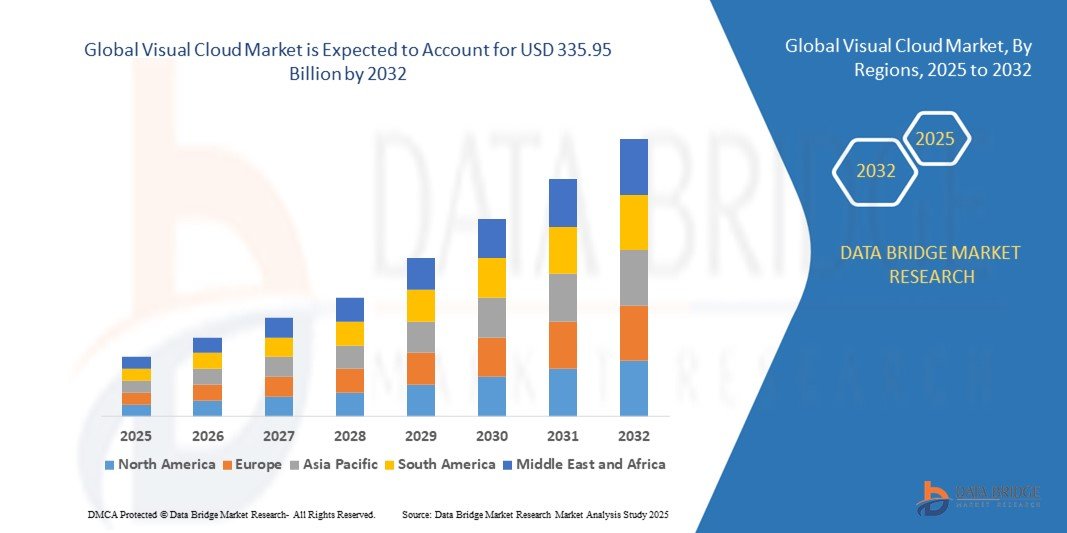Introduction
In today’s digital era, the demand for rich media content – from video streaming and gaming to augmented reality (AR) and virtual reality (VR) – is soaring at an unprecedented rate. At the heart of delivering seamless, immersive visual experiences lies an emerging paradigm known as the Visual Cloud. This concept represents the fusion of advanced media processing capabilities with scalable, flexible cloud infrastructure to redefine how visual content is created, processed, distributed, and consumed.
Definition
Visual Cloud refers to a cloud computing framework specifically designed to process, deliver, and manage rich visual content such as video streaming, graphics rendering, virtual reality, and augmented reality applications. It leverages cloud infrastructure to handle intensive visual workloads efficiently, enabling scalable, low-latency experiences across various devices and networks.
What is Visual Cloud?
Visual Cloud refers to the integration of media processing workloads – such as video encoding/decoding, rendering, computer vision, and graphics processing – with the cloud computing infrastructure. Unlike traditional cloud services that primarily focus on data storage, analytics, or general-purpose computing, Visual Cloud is specialized for handling high-bandwidth, low-latency, and compute-intensive visual media tasks.
The Visual Cloud ecosystem combines multiple technologies:
- Media Processing Pipelines: These include video transcoding, compression, rendering, computer vision analytics, and image enhancement.
- GPU-Accelerated Cloud Infrastructure: Cloud platforms equipped with GPUs (graphics processing units) or other accelerators to handle demanding visual computations.
- Edge Computing: Distributing compute resources closer to users to minimize latency and bandwidth consumption.
- AI and Machine Learning: Enhancing video quality, enabling real-time content moderation, and powering interactive visual experiences.
- Content Delivery Networks (CDNs): Efficiently delivering processed media to users globally with minimal delay.
By merging these elements, Visual Cloud empowers businesses to deliver scalable, flexible, and immersive media services without the need for heavy on-premises infrastructure.
Why Visual Cloud Matters
The Explosion of Visual Content:
Video traffic now accounts for the majority of internet data consumption, driven by platforms like YouTube, Netflix, TikTok, and Twitch. Moreover, industries such as gaming, live sports broadcasting, telemedicine, virtual events, and remote collaboration heavily rely on rich media. Handling this scale and complexity requires robust infrastructure designed for visual workloads.
Flexibility and Scalability:
Traditional media processing setups are expensive and inflexible. Media companies have historically invested in dedicated hardware for encoding, rendering, and storage, which can quickly become obsolete or insufficient for peak demand periods.
Enabling Real-Time and Immersive Experiences:
Applications like AR/VR, cloud gaming, and interactive video require ultra-low latency and high-quality rendering. Visual Cloud’s combination of edge computing and GPU acceleration meets these stringent performance needs, enabling immersive experiences that were previously difficult or cost-prohibitive.
Democratizing Media Creation and Distribution:
With Visual Cloud, even smaller creators or startups can access powerful media processing tools on the cloud. This democratizes the media ecosystem, allowing new entrants to produce high-quality content and distribute it globally without huge infrastructure investments.
Key Components of Visual Cloud
To better understand Visual Cloud, let’s break down its key components:
1. GPU-Accelerated Compute
Graphics Processing Units (GPUs) are essential for parallel processing tasks in video encoding, 3D rendering, and AI inference. Visual Cloud leverages cloud platforms that offer GPU instances optimized for media workloads. Providers like AWS (with Amazon EC2 G4 and G5 instances), Microsoft Azure (NV series), and Google Cloud (A2 instances) provide these capabilities.
2. Media Processing Frameworks and Pipelines
Visual Cloud incorporates software frameworks to automate and accelerate media workflows, such as:
- Video Transcoding: Converting video files into various formats and bitrates for adaptive streaming.
- Rendering and Compositing: For animation, VFX, and virtual production.
- Computer Vision and AI: Analyzing video streams for object recognition, content moderation, or quality enhancement.
- Streaming Protocols: Supporting low-latency delivery methods like WebRTC, CMAF, and HLS.
These pipelines are containerized and orchestrated using Kubernetes or similar platforms for flexibility and scalability.
3. Edge Computing and CDN Integration
To minimize latency, Visual Cloud often pushes compute closer to end-users via edge data centers or multi-access edge computing (MEC). By processing video or AR data at the edge, providers can reduce round-trip times and bandwidth loads.
Content Delivery Networks (CDNs) then distribute the processed content efficiently, ensuring smooth playback or interaction regardless of user location.
4. AI and Machine Learning Integration
AI enhances Visual Cloud capabilities in multiple ways:
- Video Upscaling: Using super-resolution techniques to improve video quality on the fly.
- Automated Metadata Generation: Tagging content automatically for better search and recommendations.
- Personalization: Tailoring visual content delivery based on user preferences.
- Security: Detecting and filtering inappropriate content in real-time.
Use Cases of Visual Cloud
Streaming Media and OTT Platforms:
Streaming services rely heavily on Visual Cloud to transcode massive libraries into multiple formats and resolutions dynamically. During live events, Visual Cloud infrastructure can scale to support millions of simultaneous viewers with minimal delay.
Cloud Gaming and Interactive Media:
Cloud gaming providers stream rendered game visuals from GPU-powered servers to players’ devices. Visual Cloud infrastructure ensures real-time responsiveness, high frame rates, and crisp graphics without users needing expensive consoles or GPUs.
Augmented and Virtual Reality:
AR/VR applications require complex 3D rendering and real-time data processing. Visual Cloud allows developers to offload these tasks to the cloud or edge, making immersive experiences more accessible on mobile or lightweight devices.
Remote Collaboration and Telepresence:
Tools like virtual meeting rooms and remote design studios utilize Visual Cloud to render shared 3D models, video feeds, and interactive visuals in real time, boosting productivity and communication.
Healthcare Imaging and Telemedicine:
High-resolution medical imaging workflows and real-time video consultations benefit from Visual Cloud’s ability to process and deliver large visual data sets securely and efficiently.
Challenges and Considerations
Despite its advantages, Visual Cloud also faces some challenges:
- Latency: For ultra-low-latency applications, even milliseconds matter. Deploying edge compute strategically is vital.
- Bandwidth: High-quality video streams consume significant bandwidth; compression and adaptive streaming techniques are essential.
- Cost Management: GPU resources are expensive; efficient workload orchestration and auto-scaling are necessary to control costs.
- Security and Privacy: Handling sensitive visual data requires robust encryption, access control, and compliance with regulations.
- Interoperability: Integrating different cloud providers, edge locations, and media technologies can be complex.
The Future of Visual Cloud
As 5G, AI, and cloud-native technologies mature, Visual Cloud will become even more integral to how we create, consume, and interact with visual media. Expect innovations such as:
- AI-Driven Media Creation: Automated editing, content generation, and personalization at scale.
- Decentralized Visual Cloud: Leveraging blockchain and peer-to-peer networks for distributed media processing.
- Enhanced Edge Capabilities: Greater computing power closer to users for real-time AR/VR and gaming.
- Sustainability Focus: Optimizing energy use in GPU-accelerated data centers for greener media processing.
Organizations that adopt Visual Cloud architectures will be better positioned to innovate, scale, and meet the demands of an increasingly visual digital world.
Growth Rate of Visual Cloud Market
According to Data Bridge Market Research, the global visual cloud market was valued at USD 125.48 billion in 2024 and is expected to reach USD 335.95 billion by 2032, growing at a 13.10% compound annual growth rate (CAGR).
Learn More: https://www.databridgemarketresearch.com/reports/global-visual-cloud-market
Conclusion
Visual Cloud represents a transformative shift in media technology by marrying intensive media processing with the elasticity and power of cloud infrastructure. This synergy enables high-quality, immersive, and scalable visual experiences across industries – from entertainment and gaming to healthcare and remote collaboration.


